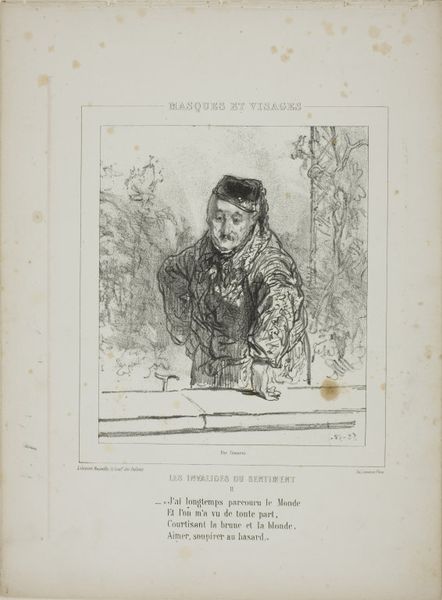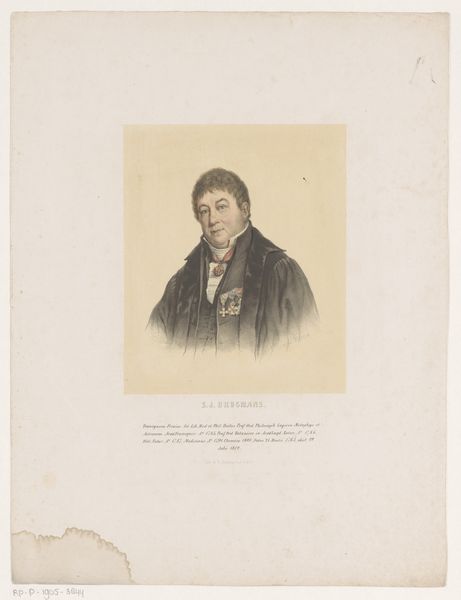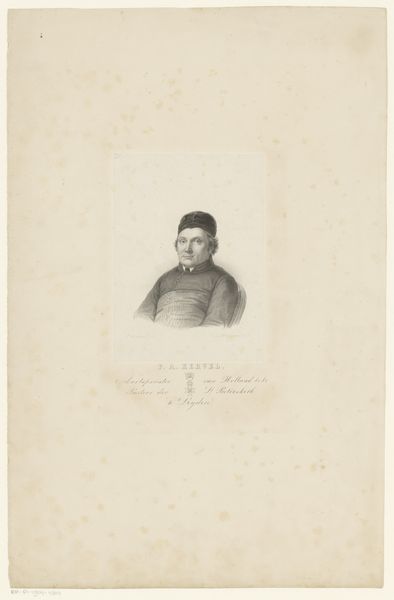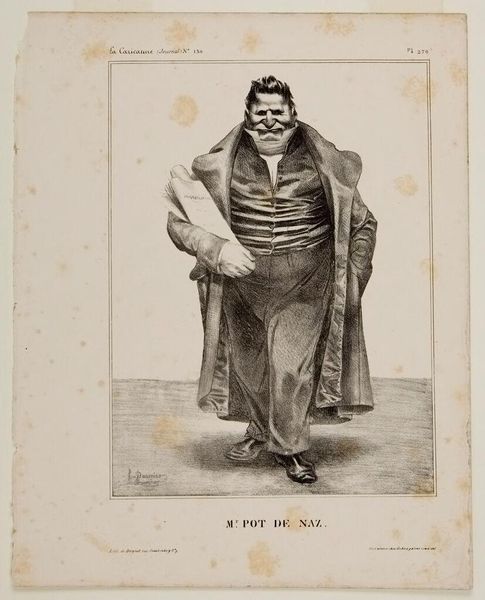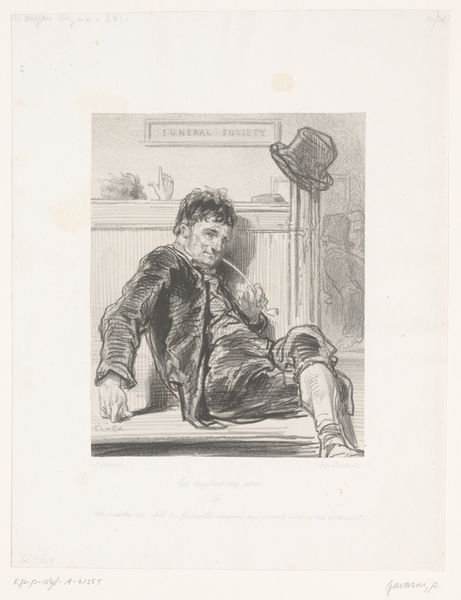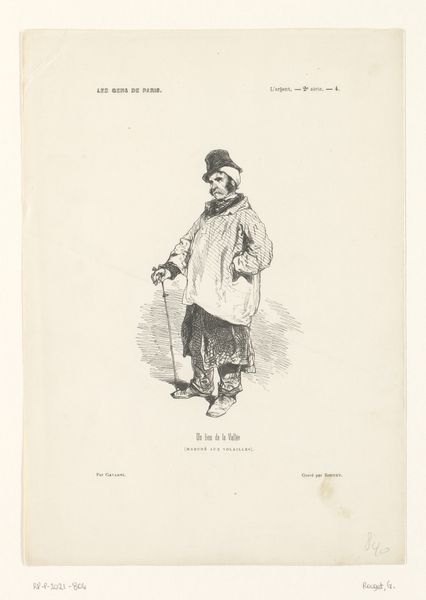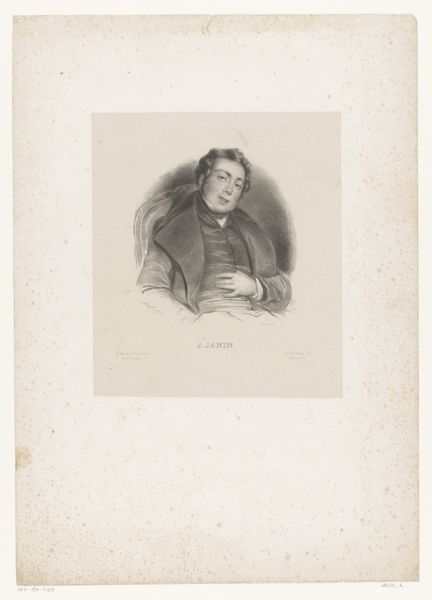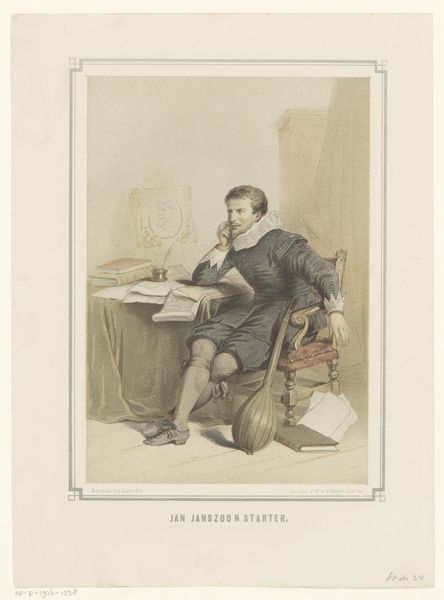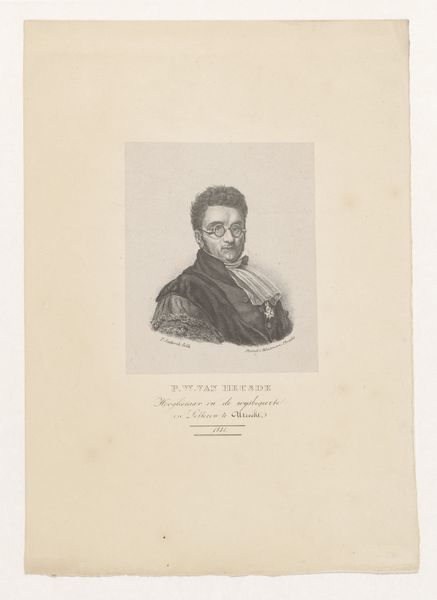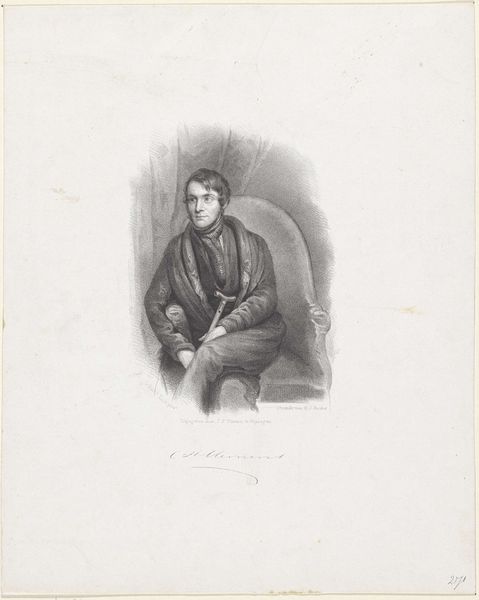
Les Invalides du Sentiment: Philibert le mauvais sujet 1853
0:00
0:00
Dimensions: 218 × 186 mm (image); 365 × 268 mm (sheet)
Copyright: Public Domain
Editor: Here we have "Les Invalides du Sentiment: Philibert le mauvais sujet," a lithograph on paper by Paul Gavarni, dating back to 1853. The somber mood strikes me. What's your interpretation of it? Curator: Looking at Gavarni's lithograph through a materialist lens, I am immediately drawn to the production of this print. Lithography allowed for the wide distribution of these images to the growing Parisian middle class. What sort of social commentary do you think this accessibility provided? Editor: I see your point. It suggests a democratization of art, but the subject himself—with his worn clothing, seemingly down on his luck – is hardly glamorous. Was Gavarni perhaps highlighting the struggles of the working class within these "Masques et Visages"? Curator: Precisely! We should consider the societal function of this image and others like it. Think about the paper it’s printed on, likely cheap and mass-produced. This contrasts sharply with the idealized portrayals in fine art of the period, instead showing us the gritty reality of daily existence in the rapidly industrializing 19th century. Note how Gavarni captured the textures of the worn clothing, making us feel the material circumstances of the subject's life. Editor: So, it’s less about the emotional state and more about the social implications of representing this individual through this accessible, reproducible medium? Curator: Exactly. The image becomes a vehicle for exploring class differences and the commodification of empathy through reproducible art. The print facilitates an awareness about individuals inhabiting those cafes. How different are such pieces from portraits intended for the bourgeois or aristocracy? Editor: That’s given me a whole new perspective on this work; thinking about the materials and the mode of production really grounds it in its historical context. Curator: Indeed, and it reveals how art can serve as both a reflection and critique of the social and economic forces at play during its creation.
Comments
No comments
Be the first to comment and join the conversation on the ultimate creative platform.
